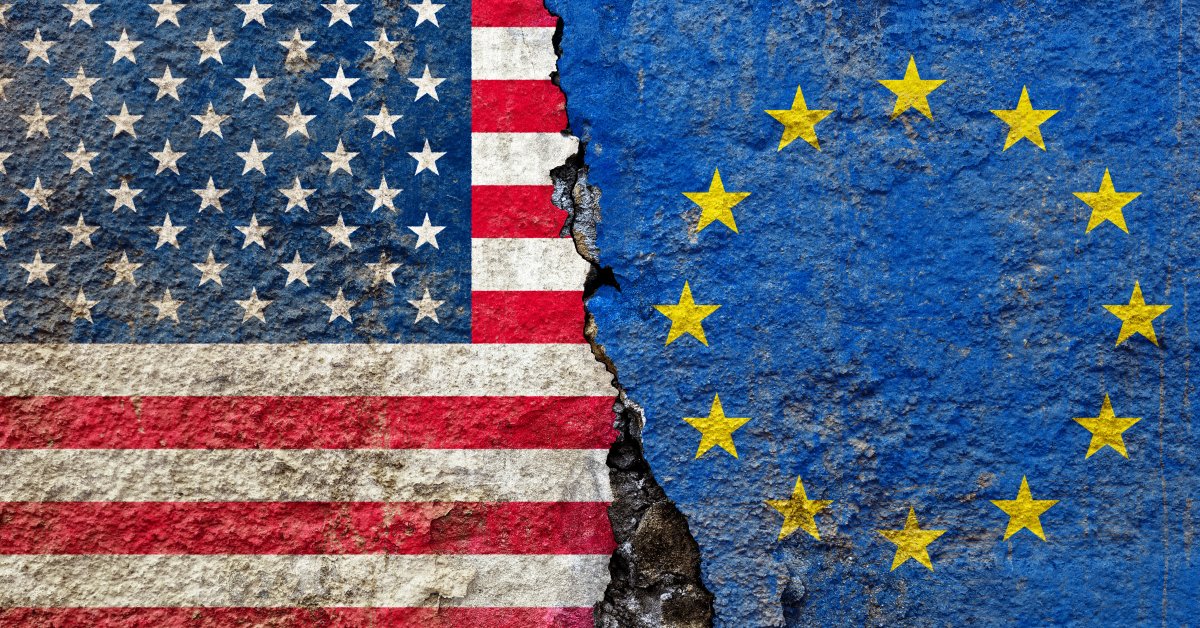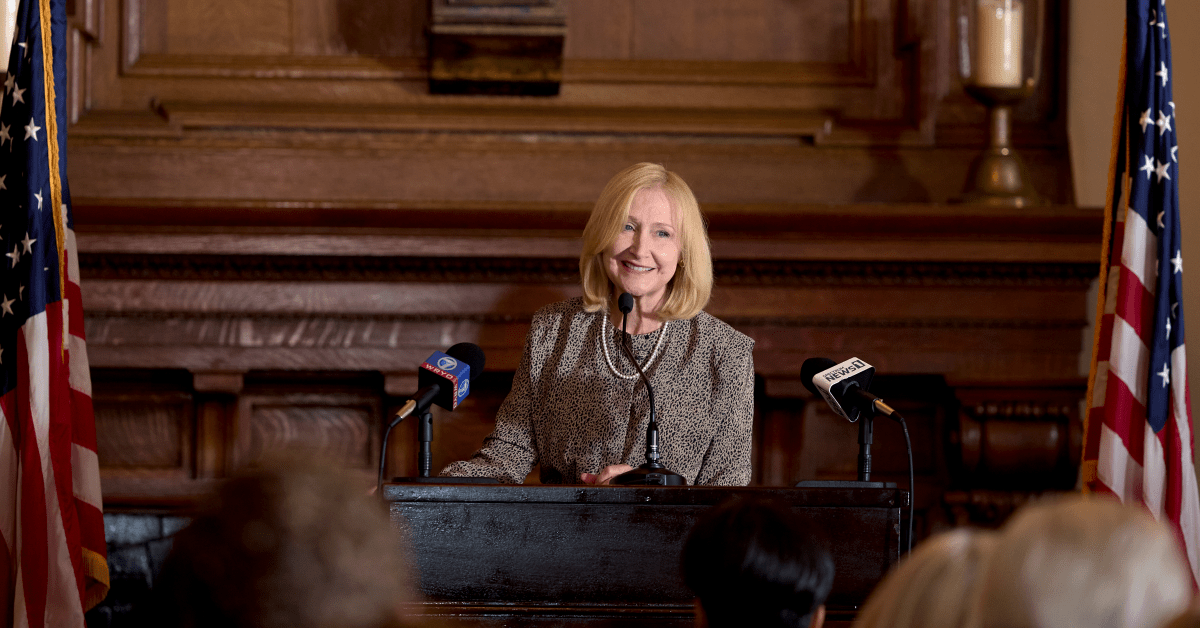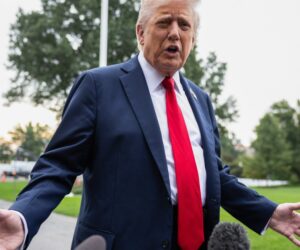Read More: E.U. Delays Retaliatory Measures Against U.S. In Hopes of Reaching a Deal by Aug. 1 After Trump Announces 30% Tariff
“The E.U. remains ready to react and that includes robust and proportionate countermeasures if required and there was a strong feeling in the room of unity,” Lars Løkke Rasmussen, foreign minister of Denmark, which assumed the rotating presidency of the E.U. at the start of this month, told reporters after the Monday meeting.
Maroš Šefčovič, the E.U.’s trade representative in its talks with the U.S., echoed Rasmusen, saying that it was “very obvious from the discussions today, the 30% is absolutely unacceptable.”
The E.U. and the U.S. have the world’s largest bilateral trade relationship.
“I cannot imagine walking away without genuine effort” towards a negotiated deal, Šefčovič told reporters on Monday. “Having said that, the current uncertainty caused by unjustified tariffs cannot persist indefinitely and therefore we must prepare for all outcomes, including, if necessary, well-considered proportionate countermeasures to restore the balance in our transit static relationship.”
The E.U.’s hardened stance—and Trump’s unwelcome 30% tariff announcement—seem an abrupt turn from the progress the two sides appeared to be making in bilateral negotiations. Šefčovič said on Monday that they had been “very close to an agreement” after several talks over the three-month pause, including speaking “almost every other day” last week.
While Trump is no doubt hoping that the higher tariffs will pressure the E.U. to agree to more concessions, experts tell TIME that Trump’s actions may have the opposite effect. “Since the U.S.’ position can change from outside of the trade negotiation process, the E.U. will trust this process less,” says Wayne Winegarden, an economist at the Pacific Research Institute. “With less trust, the E.U. will be less likely to offer concessions, which makes reaching an agreement less likely.”
Read More: Trump’s Trade Deals, Negotiations, and New Tariffs for Each Country
Here’s what to know about the E.U.’s position towards Trump’s tariffs and broader trade.
E.U. readies retaliatory moves against U.S.
Brussels has readied retaliatory tariffs on roughly €72 billion ($84 billion) worth of U.S. goods. These include tariffs on Boeing aircraft, machinery, automobiles, bourbon, and more. The countermeasures were prepared prior to Trump’s weekend announcement, and were instead meant to retaliate against Trump’s earlier 20% “reciprocal” tariff on E.U. goods and 25% tariff on autos and auto parts.
Ursula von der Leyen, president of the European Commission, said Sunday that the countermeasures would be delayed until Aug. 1. Meanwhile, European officials are ready to take action, if needed.
French Minister Delegate for Europe Benjamin Haddad said the E.U. should remain on track in its negotiations with the U.S., but “you need to show strength, you need to show force, unity and resolve” in those talks. He told Bloomberg Television that Brussels should consider using the E.U.’s anti-coercion mechanism to tax U.S. tech giants as part of its response.
The E.U. had previously readied countermeasures against around €21 billion ($25 billion) worth of U.S. products after Trump announced 25% tariffs on steel and aluminum earlier this year, which were then doubled to 50% in June. Italy’s foreign minister Antonio Tajani told Italian news outlet Il Messaggero on Monday that the E.U. is prepared to implement these if Trump goes ahead with the 30% tariff next month. The bloc twice delayed those countermeasures, which were meant to kick in in April.
The postponement of countermeasures yet again “underlines the E.U.’s strong preference for negotiation rather than confrontation,” says Alasdair Young, a professor of international affairs and co-director of the Center for European and Transatlantic Studies at the Georgia Institute of Technology.
While there’s pressure from some E.U. countries to retaliate, Young says there’s also concern from others that the U.S. could respond to retaliatory tariffs outside of trade, such as by reducing its military support of Ukraine, withdrawing troops from Europe, or undermining NATO.
“The more concerned E.U. states are about the U.S. weakening NATO and lacking U.S. support to face the Russian aggressions, the more likely they may be willing to make some concessions in trade,” says Manfred Elsig, a professor of international relations and deputy managing director of the World Trade Institute in Switzerland. The E.U. will also likely take a more targeted retaliation approach that limits economic strain on E.U. producers that depend on U.S. imports, he adds.
“The threat of E.U. retaliation in itself does not seem to affect Trump’s approach,” Young argues. Trump could extend the deadline once more, but his previous extensions were not in response to a threat of retaliation. Trump may well change course, however, if financial markets react poorly to a potential transatlantic trade war, Young adds.
Winegarden notes that Trump has indeed shown a tendency to back down quickly “when the economic pain of his actions begins to be felt.”
Trump’s new tariffs signal a desire to announce so-called “wins in his perspective of a zero-sum game in trade deals,” says Elsig. But tariffs above 10-15% will be disruptive to markets, raise short-term inflation in the U.S., and increase the chances of a recession, Elsig says, adding that stock markets have thus far largely interpreted Trump’s new tariff threats “as a bluff.”
Trump on Monday said his Administration is planning to continue negotiations with the E.U. as the Aug. 1 deadline approaches. “We’re always open to talk,” Trump told reporters. “We are open to talk, including to Europe. In fact, they’re coming over. They’d like to talk.”
Read More: Trump Agrees to Extend Deadline After Threatening E.U. With 50% Tariff, With Talks Set to ‘Begin Rapidly’
New tariffs may hinder U.S.-E.U. deal
Trump has repeatedly introduced uncertainty into trade negotiations with even the U.S.’ major trading partners, and that can make it all the more difficult for the U.S. to extract concessions, experts note.
“What Trump does, no one knows. He is not a rational actor in world politics,” says Elsig.
Trump’s top economic adviser, Kevin Hassett, told ABC News on Sunday that “the President thinks that the deals need to be better.” But with less than three weeks to negotiate a deal before the 30% tariffs kick in, it’s not clear what more the E.U. can bring to the table.
In fact, the “erratic pronouncements from the White House” could further strain U.S.-E.U. negotiations, Winegarden argues. The E.U.’s threat of countermeasures suggests that the Trump Administration has tried to force terms that “cross ‘the red line’ for the Europeans,” he adds. The E.U. has been unwilling to budge on its strict regulations around social media and technology companies, for example. “The new tariffs also signal that the trade negotiations with the E.U. are not going well from Trump’s perspective. Why else threaten higher tariffs?” says Winegarden.
Experts also argue that Trump’s announcement of higher tariffs against the E.U. and others has only made it harder for the U.S. to reach deals.
“Other trading partners observing these threats will have the same mistrust of the negotiation process, which will make them more reluctant to make trade concessions,” Winegarden says. “The new tariffs are sending the same signal to other trading partners as it is to the E.U. [that] Trump will alter the trade negotiations mid-process… The other trading partners will learn from this experience, which will again make these nations less likely to offer concessions and make a deal more difficult to reach.”
Young agrees, saying with his new threat of tariffs, Trump is making it clear that he is “the key decision-maker in U.S. trade policy.” That makes bilateral talks more difficult, because the E.U. cannot be certain that Trump won’t move the goalposts yet again, and it’s unclear what concessions would be sufficient to satisfy Trump without hurting the bloc’s interests.
Still, Young adds: “At least until the newly-threatened tariffs come into effect (if they do), the E.U. will continue to negotiate as it has done because that is the only way it knows how; slowly, methodically, and technocratically on the basis of extensive internal consultations.”
Trump’s tariffs could push E.U. closer to Asia
The threat of tariffs has already brought the E.U. closer to other trade partnerships, particularly in Southeast Asia, pushing the bloc to diversify its trade.
The E.U. and Indonesia reached a political agreement on Sunday towards a comprehensive economic partnership. The deal, which will be finalized later this year, would remove tariffs on 80% of Indonesian exports to the E.U. The E.U. is Indonesia’s fifth-largest trading partner, with the Southeast Asian country mainly selling the bloc palm oil and rubber products.
Trump also announced a trade deal with Indonesia on Tuesday. The plan is that Indonesia will remove all tariffs on U.S. imports while Indonesian exports to the U.S. will be tariffed at 19%, Trump told reporters. “We will have full access into Indonesia, and we have a couple of those deals that are going to be announced,” Trump added.
He celebrated the progress in a Truth Social post, saying that the deal “opens up Indonesia’s ENTIRE MARKET to the United States for the first time in history.”
“Indonesia has committed to purchasing $15 billion dollars in U.S. energy, $4.5 billion dollars in American agricultural products, and 50 Boeing jets, many of them 777’s,” he wrote. “For the first time ever, our ranchers, farmers, and fishermen will have complete and total access to the Indonesian market of over 280 million people.”
The E.U. has also engaged in trade talks with other Southeast Asian countries in recent months.
The bloc held its sixth round of talks with Thailand at the end of June, with the goal of reaching an agreement by the end of the year. Malaysia also resumed talks with the E.U. over a trade deal earlier this month after suspending negotiations in 2012 (due to disagreements over E.U. regulations on Malaysia’s palm oil industry), while the Philippines said in talks last year that it hopes to reach a deal with the bloc by 2027.
“Over time, the interests of the E.U. will become closer with the interests of other nations and less intertwined with the U.S.,” Winegarden predicts.
The E.U. has also sought to develop its relationship with China, the U.S.’ geopolitical rival, amid Trump’s tariffs. Talks stalled in June over China’s restrictions of rare earth exports which are critical to Europe’s autos industry, but are set to begin again in late July as E.U. leaders are set to attend a summit in Beijing.
“The E.U.’s stance vis-a-vis China has softened over the past months,” says Elsig. Progress towards several other agreements that were previously stuck have also gained steam in the wake of Trump’s tariff threats, including a deal with Mercosur (the South American trade bloc) and bilateral agreements with Switzerland.
Beijing has for the most part embraced the narrative that the economic turmoil of Trump’s tariffs are bringing Europe closer to China. Still, tensions remain over the E.U.’s trade deficit with China and geopolitical risks, including China’s support for Russia’s war in Ukraine.
“There is no China card for Europe,” Liana Fix, a fellow for Europe at the Council on Foreign Relations, told the New York Times.
“While U.S. tariffs on the E.U. increase the relative importance of China’s market for European exporters, it does not alter the E.U.’s existing issues with China,” Young says, adding that U.S. tariffs on Chinese goods could push Chinese exports previously destined for the U.S. to the E.U. instead.
Nevertheless, Winegarden notes that the world’s problems with China are best addressed by strengthening the global trading system, not undermining it.
“The Trump Administration is making this goal more difficult to the detriment of the U.S. [and] many other nations, too,” he says.








